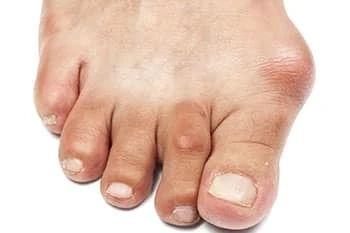Bunions are lumpy and form at the side of the foot and there are several types of bunion surgery to get bunion relief. However, how effective is fixing a bunion and is it permanent relief?
Non-surgical ways to fix a bunion
Most conservative methods of treatment relieve bunion pain because the formation has already started. The podiatrists try to lessen the rapid bunion symptoms and bunion formation. Conservative methods do not necessarily mean removing or reducing bunions.
- Find shoes that have a wide toe box, soft sole, and low heel.
- Hold an ice pack or a bag of frozen peas over the bunion for about 10 minutes every day.
- Use over-the-counter painkillers.
- Wear bunion pads to stop the bunion from rubbing against the shoes.
- If you have excess weight, try to shed some weight.
Is surgery effective?
It is not uncommon for bunions to come back after surgery. In a bunionectomy, the bony prominence is removed and it works well for mild and moderate bunions compared to severe bunions.
Is bunion surgery a permanent solution?
Surgery is the only way to get rid of the bunion but it might not be an effective long-term solution because a recurrence can occur. Surgery can be painful and inconvenient due to the time needed to recover and heal to get back to your daily activities. The podiatrist can effectively treat the bunion symptoms through surgery. If you wear narrow-toed shoes or high heels after surgery the bunion will recur.
Can bunion surgery meet everyone’s expectations?
Most patients prefer to undergo bunion surgery because of its unpleasant appearance. The bunion surgery improves the aesthetics of the foot but it cannot completely restore the foot’s appearance. Reduced flexibility of the big toe joint is not pleasant. Before undergoing the bunion surgery, the podiatrist explains the process and the probable outcomes.
Is bunion surgery always successful?
The podiatrist would not engage in the surgery with the thought that it will fail but there are complications associated with bunion surgery that the patients need to be aware of. One is prone to infections, swelling, and deep vein thrombosis. Other complications include joint stiffness, loss of correction, under or over-correction, and nerve entrapment. Also, discuss with the podiatrist your expectations of the bunion surgery.
What is minimally invasive bunion surgery?
Thank you to technology,traditional bunion surgery has been revolutionized into minimally invasive bunion surgery that improves surgery outcomes. The new minimally invasive is done as an outpatient procedure. The process lasts for around two hours with ¼ inch incisions performed to allow the surgery to be performed. After surgery, regular gauze and bandages are used to cover the foot. There is less bunion surgery recovery period and the surgery is painless, fast, and effective.
Bunions can be very uncomfortable to live with. If you are experiencing pain in your foot or ankle, contact the podiatrist at DeNiel Foot & Ankle Center. Our doctor will provide the care to keep you pain-free and on your feet.
0



